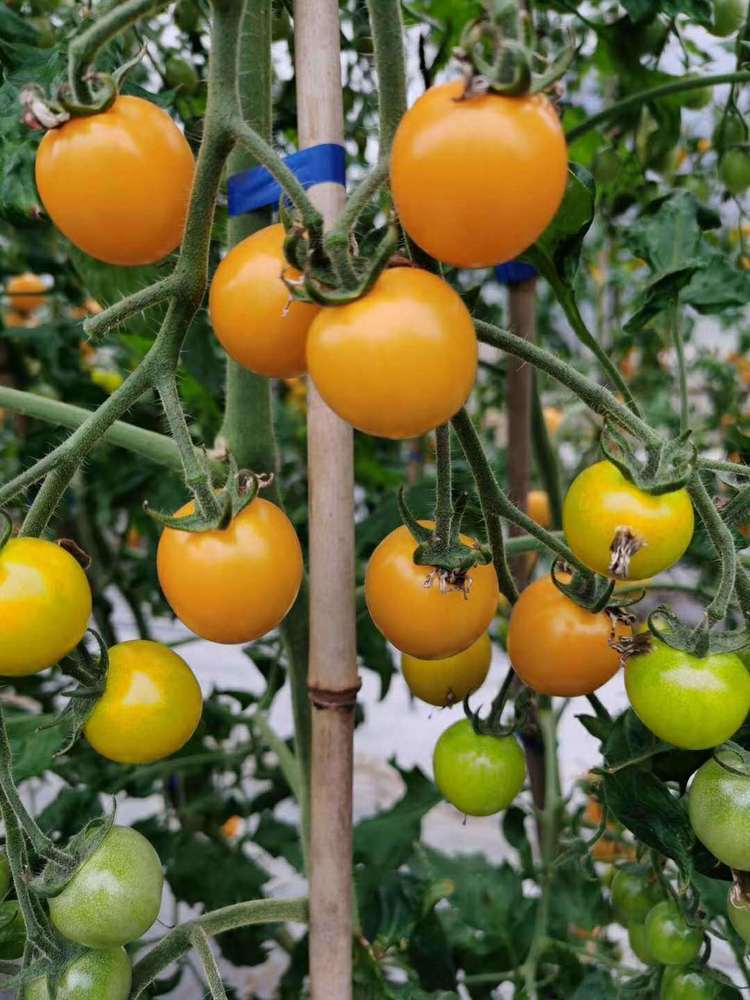How to Stake Tomato Plants with Bamboo: 7 Easy Steps
Home‑grown tomatoes reward patience with bursts of sun‑sweet flavor—but only if the vines stay upright, airy, and disease‑free. Gardeners who skip proper support often watch fruit rot in the mud or snap in a midsummer squall. This guide shows you exactly how to stake tomato plants with bamboo, a quick, low‑cost technique that preserves taste and boosts production. As a factory‑direct wholesaler, Wellco Wholesale supplies pallet loads of pre‑cut bamboo stakes to commercial farms and backyard growers alike, making professional‑grade materials easy to source.

1 – Why Staking Matters for Tomato Health and Yield
1.1 Plant physiology: airflow, sun exposure, disease reduction
Tomatoes exhale moisture through their leaves. If foliage crowds the soil, humidity lingers around stems and encourages blights. The USDA Integrated Pest Management program reports that keeping leaves 30 cm above ground can cut early‑blight incidence by 43 %. Elevating vines on bamboo stakes also angles clusters toward sunlight, accelerating the photosynthesis that sweetens fruit.
1.2 Productivity proof: 25 % higher yield in a 2024 Midwestern field trial
In a side‑by‑side plot at an anonymized Indiana research farm, 50 Roma plants were left sprawling while 50 others were staked with 1.8 m × 20 mm bamboo. Harvest logs showed staked rows averaging 9.6 kg per plant—25 % more than the control. The farm manager credits improved spray coverage and easier hand‑picking: “We trimmed labor minutes per pound because fruit hung where buckets could reach.”
2 – Selecting the Right Bamboo Stakes
2.1 Bamboo species, diameter & length cheat‑sheet
Not all canes are equal. Moso and Tonkin culms harden dense walls that shrug off rain and sun for three seasons. Aim for diameters between 18–25 mm for indeterminate tomatoes topping 2 m; determinate bush varieties manage with 12–15 mm. Length should exceed projected vine height by at least 30 cm so 20 cm can be driven into the soil.
2.2 Bulk‑buy checklist for pros & DIYers
Whether you’re ordering a container load or a 25‑pack, inspect for:
-
Even internode spacing (fewer cracks)
-
Kiln‑dried finish to deter mold
-
Deburred tips for safer driving
Wellco Wholesale bundles stakes in heat‑sealed trays with built‑in moisture indicators so buyers can confirm dryness on arrival—handy for landscapers who store inventory all winter.
3 – Preparing for Installation
3.1 Best timing: pre‑flowering stage, soil moisture sweet spot
Drive stakes within a week of transplanting or whenever seedlings reach 20 cm. Later insertions risk tearing roots. Choose a day after moderate rain; damp earth accepts stakes without fracturing.
3.2 Tools & safety gear you actually need
-
1.8 m bamboo stakes
-
Rubber mallet or dead‑blow hammer
-
Soft tie material (old T‑shirts, jute twine, biodegradable silicone bands)
-
Gardening gloves and safety glasses
A heavy steel post driver is overkill for bamboo; it can splinter culms.
4 – Step‑by‑Step: How to Stake Tomato Plants with Bamboo
4.1 Driving the stake: depth, angle, and spacing guidelines
-
Position the stake 5–8 cm south of the stem to prevent root shade.
-
Hold vertical; drive 20 cm deep for loam or 30 cm in sandy beds.
-
Space plants 45–60 cm apart; rows need 90 cm for airflow.
4.2 Tying techniques: cushioned figure‑eight, reusable soft ties
Wrap your tie around the stake once, cross into a figure‑eight, then loop loosely around the stem so it can thicken. Certified crop adviser Elena Ruiz recommends placing the first tie “just above the second true leaf, then every 30 cm as the vine climbs.”
4.3 Mid‑season adjustments: weekly check schedule & height extensions
Inspect ties each watering day. If stems press the loop, retie. For vigorous indeterminates, lash a second stake beside the first and bind the tops together to create a teepee.
5 – Troubleshooting & Common Mistakes
5.1 Loose anchoring & wind damage
On a coastal Oregon homestead, gusts snapped improperly seated stakes flush with the soil. The fix: hammer stakes in angled against the prevailing wind and add a cross‑bar tie between neighboring stakes for stability.
5.2 Stem girdling: spotting and fixing tie burn early
If you see a pale ring on the stem, immediately cut the tie and retie higher with cloth strips. Leaving girdles can choke vascular flow and stunt fruit by up to 18 %, according to a 2023 extension bulletin.
6 – Advanced Tips for Bigger Harvests
6.1 Pruning strategy that pairs with bamboo staking
Pinch suckers below the first flower cluster weekly to direct carbohydrates upward. Fewer but heavier fruits mean less tie work and quicker ripening.
6.2 Companion planting & organic pest control
Basil repels thrips while marigolds discourage nematodes. I tuck a ring of sweet basil around each staked tomato; the aromatic canopy also shades soil, reducing irrigation frequency by about a third.
7 – Sustainability and Cost Considerations
7.1 Bamboo vs. metal/plastic: life‑cycle cost and carbon footprint
Steel rebar lasts decades but emits roughly 1.8 t CO₂ per tonne produced. A study by the International Bamboo & Rattan Organization shows cultivated bamboo sequesters enough carbon in three years to offset harvesting emissions, making it a net sink.
7.2 Reusing and sanitizing bamboo stakes for multiple seasons
At season’s end, scrub stakes in a 10 % bleach solution, rinse, and sun‑dry. Properly stored, thick‑walled canes often endure three cycles, effectively halving annual cost.
Conclusion
Bamboo staking transforms a tangled tomato patch into a harvest machine: healthier vines, cleaner fruit, and easier picking. Ready to equip your rows? Buy it now—reach out to Wellco Wholesale for a fast quote on tray‑packed bamboo stakes shipped factory direct.
Frequently Asked Questions
Q1: How long do bamboo stakes last in a humid climate?
Thick‑walled stakes typically remain serviceable for three growing seasons if sanitized and stored dry between harvests.
Q2: Can I use string instead of soft ties?
Plain string often cuts stems. Opt for flat cloth or purpose‑made nursery bands that stretch as the vine gains girth.
Q3: What length stake should I choose for container tomatoes?
Container cultivars average 1.2 m tall; a 1.5 m stake offers adequate depth and headroom.
Q4: Do I need to remove leaves when staking?
No, but pruning lower leaves to 20 cm above soil boosts airflow and disease resistance.
Q5: How soon after transplanting should staking begin?
Insert stakes within seven days of planting to avoid root disturbance later.

